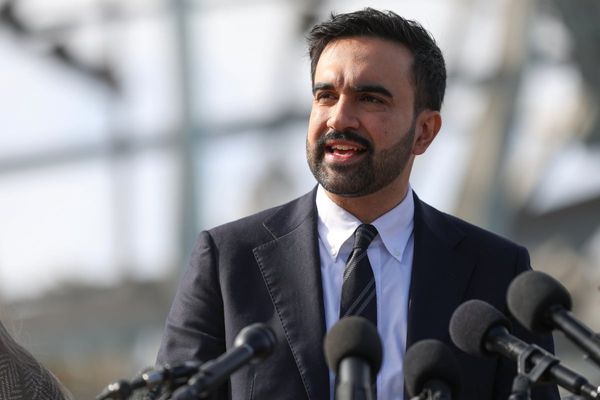
The idea of a fully digital economy sounds sleek and convenient—until you realize not everyone can keep up. As the world moves closer to becoming a cashless America, millions of people may find themselves left behind. Credit cards, digital wallets, and payment apps may simplify transactions for some, but they also create barriers for others who depend on physical currency. From the elderly to small business owners, the transition could reshape financial access in ways society hasn’t fully considered. Here are seven groups likely to struggle most when cash becomes a thing of the past.
1. Older Adults Unfamiliar with Digital Banking
Many seniors grew up managing their finances with checkbooks, bank tellers, and cash envelopes. The shift toward a cashless America could leave them overwhelmed by apps, passwords, and online security measures. Studies show that older adults are more vulnerable to scams and may distrust digital platforms altogether. Without in-person assistance or simple alternatives, they risk being excluded from everyday financial transactions. Helping this group requires education and technology designed with accessibility in mind.
2. Low-Income Households Without Banking Access
Roughly 4.2 percent of U.S. households remain “unbanked,” meaning they don’t have checking or savings accounts. These families rely heavily on cash to pay rent, buy groceries, or cover utilities. In a cashless America, their financial independence would depend on access to digital tools they may not afford, like smartphones or internet service. The cost of maintaining digital accounts or prepaid cards can also add up quickly. Without deliberate inclusion efforts, a cashless society risks widening the economic divide.
3. Rural Communities with Limited Connectivity
Not every region of the country has reliable internet or cellular coverage. Rural communities already face challenges with online banking and mobile payments, making a cashless America especially difficult. When connectivity drops, people in these areas could lose access to funds entirely. Small businesses that rely on physical transactions might struggle to stay open. Until infrastructure improves nationwide, rural America could be unintentionally sidelined in the digital economy.
4. Small Businesses That Rely on Cash Flow
Local shops, food trucks, barbers, and street vendors often operate in cash-heavy environments. These small businesses depend on physical money to avoid high transaction fees from card processors or payment platforms. Transitioning to digital-only payments could eat into already thin profit margins. In a cashless America, they’d need to invest in new technology, cybersecurity, and compliance measures—costs many can’t easily absorb. Unless financial systems adapt to support them, cash-dependent entrepreneurs may face serious hurdles.
5. Children and Teens Learning Financial Responsibility
Cash plays an important role in teaching kids the value of money. When children earn an allowance or pay for small purchases in cash, they physically see money leaving their hands. In a cashless America, those lessons become abstract, replaced by numbers on a screen. While digital tools like prepaid debit cards or family banking apps can help, they remove the tangible learning experience. Without proper education, younger generations might struggle to understand budgeting and saving in a virtual world.
6. Undocumented Workers and Migrant Laborers
For many undocumented workers, cash is the safest and most practical way to get paid. They often lack the identification required to open traditional bank accounts or access digital payment systems. In a cashless America, this group could lose the ability to participate in the formal economy altogether. Even alternative options like prepaid cards or mobile wallets often require verification steps they cannot complete. The result could be an increase in economic inequality and informal labor practices.
7. Privacy-Conscious Individuals
Some people value the anonymity that comes with using cash. In a cashless America, every transaction leaves a digital trail that can be tracked, analyzed, or even sold. While financial transparency helps prevent fraud, it also raises concerns about data privacy and surveillance. For individuals wary of government oversight or corporate data mining, losing the option of physical money feels intrusive. Balancing technological progress with personal freedom will be one of the biggest challenges of the transition.
Rethinking Inclusion in a Fully Digital Future
The shift toward a cashless America may be inevitable, but it doesn’t have to be exclusionary. Policymakers, financial institutions, and technology companies must design systems that ensure equal access for all groups, not just the digitally savvy. Bridging the gap means improving infrastructure, lowering fees, and prioritizing digital literacy. The ultimate goal should be convenience without sacrificing fairness. A future without cash can work—if no one is left behind.
Do you think a fully cashless America would help or harm everyday consumers? Which groups do you believe would face the biggest challenges? Share your thoughts in the comments.
What to Read Next…
8 Ways to Make Your Cash Work For You
5 Bank Fees That Are Secretly Draining Hundreds From Your Account Annually
6 Financial Dangers of Keeping Too Much Cash in Checking
7 Surprising Risks of Keeping Too Much Cash at Home
6 Situations Where Cash Is Safer Than Digital Payments
The post Cashless America: 7 Groups That Will Struggle Most When Paper Money Disappears appeared first on The Free Financial Advisor.







